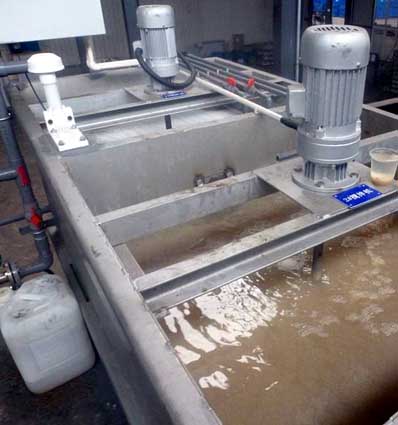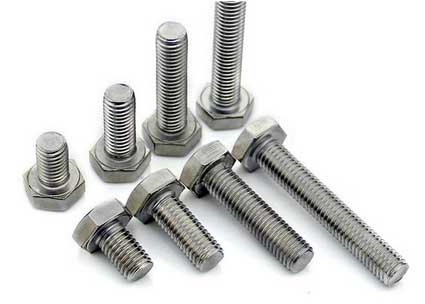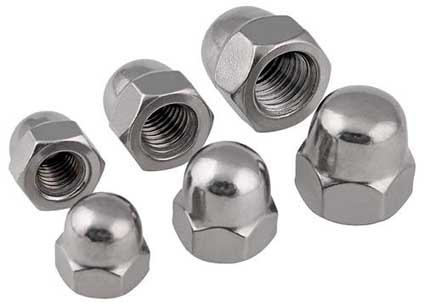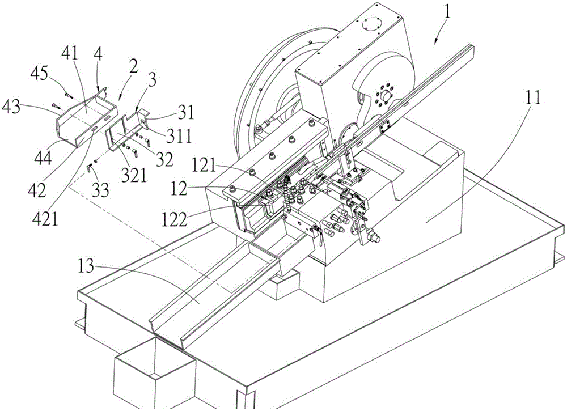Machining Process of Titanium Screw Parts
Key words: Titanium screw, China Precision Titanium Alloy screw supplier, annealing, pickling, drawing, forming, hot-beating, nut forming, teeth rolling, heat treatment, surface treatment

1. Purpose:
The wire is heated to an appropriate temperature for a certain period of time, and then slowly cooled to adjust the crystal structure, reduce the hardness, and improve the normal temperature processability of the wire.
2, the operation process:
(1) Incoming material: The product to be treated is placed in the furnace, and the furnace cover should be tightly closed. Generally, 7 rolls (about 1.2 tons/volume) can be processed simultaneously in one furnace.
(2) Heating: The temperature in the furnace is slowly increased (about 3-4 hours) to the specified temperature.
(3) Insulation: Material TA1, TA2 wire is kept at 680 ° C -715 ° C for 4-6 h, the material is TC4 wire is maintained at 750 ° C -960 ° C for 5.5-7.5 h.
(4) Cooling: The temperature in the furnace is slowly lowered (about 3-4 hours) to below 550 °C, and then cooled to room temperature with the furnace.
Third, quality control:
1. Hardness: The material is TA1, the hardness of the wire after annealing is HV120-170, and the hardness of the material is HV120-180 after annealing.
2. Appearance: There must be no oxide film or decarburization on the surface.

The oxide film on the surface of the wire is removed, and a phosphate film is formed on the surface of the metal. In order to reduce the wire drawing and cold pier or forming process, the tooling is scratched.
2>, the operation process:
(1) Pickling: The whole disk element is immersed in three hydrochloric acid tanks at a normal temperature and a concentration of 20-25% for several minutes, the purpose of which is to remove the oxide film on the surface of the wire.
(2) Clear water: remove the corrosion product of hydrochloric acid on the surface of the wire.
(3) Oxalic acid: increase the activity of the metal to make the film formed in the next process more dense.
(4) Film treatment: The disk element is immersed in phosphate, the surface of titanium is contacted with the chemical treatment solution, and the steel is dissolved to form an insoluble compound (such as Zn2Fe(Po4)2•4H2o), which adheres to the surface of titanium to form a film.
(5) Clear water: remove the residue on the surface of the membrane.
(6), lubricant: Because the coefficient of friction of the phosphate film is not very low, it can not give sufficient lubricity during processing. However, it reacts with a metal soap (such as sodium soap) to form a hard metal soap layer, which can increase its lubricating properties.

I. Purpose: The disc to the required element cold drawn wire diameter. Practically, for some products, it can be divided into two stages: roughing (shelling) and precision drawing.
Second, the operation process
The disc element after pickling line of cold drawn by pumping machine to the required diameter. It is suitable for wire used in large screw, nut and tooth.




First, heat treatment method:
Different heat treatment methods can be selected according to different objects and purposes.
TA1: high temperature tempering after quenching (800850 ° C)
TA2: medium temperature tempering after quenching (920-980 ° C)
TC4: quenching after carburizing and then low temperature tempering (1000-1050 °C)
TA1 HV140-150, with the increase of tempering temperature, the general rule is that the strength decreases, while the plasticity and toughness rise. However, due to the different carbon content in TA1, TA2 and TC4, the tempering temperature has different effects on it. Therefore, in order to obtain good comprehensive mechanical properties, the following approaches can be taken separately:
(1), titanium TA1 is selected, and after quenching, tempering is performed at a low temperature of 850 ° C or lower. In order to improve the surface wear resistance of such titanium, only the carbon content of each surface layer is increased, that is, surface carburization is performed, which is generally called β grain boundary titanium.

Titanium screw production process (1)--annealing

1. Purpose:
The wire is heated to an appropriate temperature for a certain period of time, and then slowly cooled to adjust the crystal structure, reduce the hardness, and improve the normal temperature processability of the wire.
2, the operation process:
(1) Incoming material: The product to be treated is placed in the furnace, and the furnace cover should be tightly closed. Generally, 7 rolls (about 1.2 tons/volume) can be processed simultaneously in one furnace.
(2) Heating: The temperature in the furnace is slowly increased (about 3-4 hours) to the specified temperature.
(3) Insulation: Material TA1, TA2 wire is kept at 680 ° C -715 ° C for 4-6 h, the material is TC4 wire is maintained at 750 ° C -960 ° C for 5.5-7.5 h.
(4) Cooling: The temperature in the furnace is slowly lowered (about 3-4 hours) to below 550 °C, and then cooled to room temperature with the furnace.
Third, quality control:
1. Hardness: The material is TA1, the hardness of the wire after annealing is HV120-170, and the hardness of the material is HV120-180 after annealing.
2. Appearance: There must be no oxide film or decarburization on the surface.

Screw production process (2) - pickling
1>, the purpose:The oxide film on the surface of the wire is removed, and a phosphate film is formed on the surface of the metal. In order to reduce the wire drawing and cold pier or forming process, the tooling is scratched.
2>, the operation process:
(1) Pickling: The whole disk element is immersed in three hydrochloric acid tanks at a normal temperature and a concentration of 20-25% for several minutes, the purpose of which is to remove the oxide film on the surface of the wire.
(2) Clear water: remove the corrosion product of hydrochloric acid on the surface of the wire.
(3) Oxalic acid: increase the activity of the metal to make the film formed in the next process more dense.
(4) Film treatment: The disk element is immersed in phosphate, the surface of titanium is contacted with the chemical treatment solution, and the steel is dissolved to form an insoluble compound (such as Zn2Fe(Po4)2•4H2o), which adheres to the surface of titanium to form a film.
(5) Clear water: remove the residue on the surface of the membrane.
(6), lubricant: Because the coefficient of friction of the phosphate film is not very low, it can not give sufficient lubricity during processing. However, it reacts with a metal soap (such as sodium soap) to form a hard metal soap layer, which can increase its lubricating properties.

Screw Production Technology (3) - Wire Drawing
I. Purpose: The disc to the required element cold drawn wire diameter. Practically, for some products, it can be divided into two stages: roughing (shelling) and precision drawing.
Second, the operation process
The disc element after pickling line of cold drawn by pumping machine to the required diameter. It is suitable for wire used in large screw, nut and tooth.

Screw production process (4)--forming
I. Purpose: The wire is forged (or hot forged) to achieve the shape and length (or thickness) of the semi-finished product.
Second, the operation process:
1. Hex bolts (four-mode four-stroke or three-mode three-stroke)
(1) Cutting: The movable material is unidirectionally moved to cut the wire stuck in the cutting die into the desired blank.
(2), One punches: The back punch holds the embryo blank die and extrudes the embryo blank, and then the embryo is pushed out by the back punch.
(3), two punches: the billet enters the second die, the second die is extruded, the billet is oblate, and then the die pushes the billet.
(4), three punches: The billet enters the third mold and is cut by the hexagonal three-punching die. The hexagonal head of the billet is initially formed. After that, the rear die pushes the blank into the third die, and the cut material is cut from the hexagonal head, and the hexagonal head is formed.
2. Hex bolts (three-mode three-stroke)
3, screws (general head type one die two punch)
(1), cutting: through the movable scissors one-way movement, the wire stuck in the cutting die is cut into the desired blank.
(2), one punches: The mold is fixed, and a die is initially formed to make the next stroke fully formed. When the product is a word groove, a die is a concave, elliptical groove, and when the product is a cross groove, a die is a concave square groove.
(3), two punches: After one punch, the blanking tool runs as a whole, and the two punching dies move to the front of the punching die. At the same time, the two punching dies move forward to form the final product. Afterwards, the embryo is pushed out by the back punch rod.
Second, the operation process:
1. Hex bolts (four-mode four-stroke or three-mode three-stroke)
(1) Cutting: The movable material is unidirectionally moved to cut the wire stuck in the cutting die into the desired blank.
(2), One punches: The back punch holds the embryo blank die and extrudes the embryo blank, and then the embryo is pushed out by the back punch.
(3), two punches: the billet enters the second die, the second die is extruded, the billet is oblate, and then the die pushes the billet.
(4), three punches: The billet enters the third mold and is cut by the hexagonal three-punching die. The hexagonal head of the billet is initially formed. After that, the rear die pushes the blank into the third die, and the cut material is cut from the hexagonal head, and the hexagonal head is formed.
2. Hex bolts (three-mode three-stroke)
3, screws (general head type one die two punch)
(1), cutting: through the movable scissors one-way movement, the wire stuck in the cutting die is cut into the desired blank.
(2), one punches: The mold is fixed, and a die is initially formed to make the next stroke fully formed. When the product is a word groove, a die is a concave, elliptical groove, and when the product is a cross groove, a die is a concave square groove.
(3), two punches: After one punch, the blanking tool runs as a whole, and the two punching dies move to the front of the punching die. At the same time, the two punching dies move forward to form the final product. Afterwards, the embryo is pushed out by the back punch rod.

Third, hot hit
1. Heating: In the heating equipment, the end of the blank to be formed is heated to a white hot state, and the heating temperature and time are set according to the product specifications. Generally, it is heated for 3-10 seconds or less for 7-10 seconds, and 7/8-1" is heated for about 15 seconds.
2. Molding: The heated billet is quickly moved to the molding machine, through the rear seat, the clamp is fixed, and the head mold impacts the billet and is molded. The distance of the rear seat can be adjusted according to the length of the blank.
3. Beam rod: The product is contracted by extrusion on the beam machine.
Hot fight is also called red fight.
2. Molding: The heated billet is quickly moved to the molding machine, through the rear seat, the clamp is fixed, and the head mold impacts the billet and is molded. The distance of the rear seat can be adjusted according to the length of the blank.
3. Beam rod: The product is contracted by extrusion on the beam machine.
Hot fight is also called red fight.

Fourth, the nut molding:
(1) Operational process:
1. Cutting: The inner die (410) is matched with the shearing knife (301) to cut the wire into the desired blank.
2. One punches: The front die (111), the stroke die (411), and the back punch (211) are combined to shape the deformed cut blank, and the blank is pushed out by the back punch (211).
3, two punches: The running clamp (611) clamps the billet from one punch to the second punch, and is matched by the front die (112), the stroke die (412), and the rear punch bar (412). The billet is further shaped and the flattening and satiety of the first punch are enhanced, and then the billet is pushed out by the back punch (212).
4, three punches: The running clamp (612) clamps the blank from the second punch to the triple punch, and is matched by the front die (113), the stroke die (413), and the rear punch bar (213). The billet is again extruded so that the undershoot can be fully formed, after which the billet is pushed out by the back punch (213).
5, four punches: The running clamp (613) clamps the billet from the three punches to the four punches, and is matched by the front die (114), the stroke die (414), and the rear punch bar (214). The nut is fully formed and the thickness of the nut is adjusted by controlling the thickness of the iron filings, after which the blank is pushed out by the back punch (214).
6, five punches: The running clamp (614) clamps the billet from the four punches to the five punches, and is matched by the front die (119) and the stripper (507). The fully formed billet is punched, and the broken iron scraps are put into the punching mold to complete the forming of the nut. The head mark of the nut is formed during this process.
1. Cutting: The inner die (410) is matched with the shearing knife (301) to cut the wire into the desired blank.
2. One punches: The front die (111), the stroke die (411), and the back punch (211) are combined to shape the deformed cut blank, and the blank is pushed out by the back punch (211).
3, two punches: The running clamp (611) clamps the billet from one punch to the second punch, and is matched by the front die (112), the stroke die (412), and the rear punch bar (412). The billet is further shaped and the flattening and satiety of the first punch are enhanced, and then the billet is pushed out by the back punch (212).
4, three punches: The running clamp (612) clamps the blank from the second punch to the triple punch, and is matched by the front die (113), the stroke die (413), and the rear punch bar (213). The billet is again extruded so that the undershoot can be fully formed, after which the billet is pushed out by the back punch (213).
5, four punches: The running clamp (613) clamps the billet from the three punches to the four punches, and is matched by the front die (114), the stroke die (414), and the rear punch bar (214). The nut is fully formed and the thickness of the nut is adjusted by controlling the thickness of the iron filings, after which the blank is pushed out by the back punch (214).
6, five punches: The running clamp (614) clamps the billet from the four punches to the five punches, and is matched by the front die (119) and the stripper (507). The fully formed billet is punched, and the broken iron scraps are put into the punching mold to complete the forming of the nut. The head mark of the nut is formed during this process.

Screw production process (5) - Rolling teeth
First, the purpose: Formed semi-finished products are rolled or tapped to achieve the required threads. In practice, for bolts (screw) is called teeth rolling, rack is called teeth rolling, and nut is called tapping.
Second, Rolling teeth: Tooth rolling is to fix one tooth plate, and another movable tooth plate drives the product to move. By extrusion, the product produces plastic deformation and forms the required threads.
Third, Hobbing: Rolling teeth are two corresponding screw rollers, which rotate in the positive direction. The products are plastic deformed by extrusion to form the required threads. Rolling teeth are usually used in racks.
Second, Rolling teeth: Tooth rolling is to fix one tooth plate, and another movable tooth plate drives the product to move. By extrusion, the product produces plastic deformation and forms the required threads.
Third, Hobbing: Rolling teeth are two corresponding screw rollers, which rotate in the positive direction. The products are plastic deformed by extrusion to form the required threads. Rolling teeth are usually used in racks.
Screw production process (6) - heat treatment
First, heat treatment method:
Different heat treatment methods can be selected according to different objects and purposes.
TA1: high temperature tempering after quenching (800850 ° C)
TA2: medium temperature tempering after quenching (920-980 ° C)
TC4: quenching after carburizing and then low temperature tempering (1000-1050 °C)
TA1 HV140-150, with the increase of tempering temperature, the general rule is that the strength decreases, while the plasticity and toughness rise. However, due to the different carbon content in TA1, TA2 and TC4, the tempering temperature has different effects on it. Therefore, in order to obtain good comprehensive mechanical properties, the following approaches can be taken separately:
(1), titanium TA1 is selected, and after quenching, tempering is performed at a low temperature of 850 ° C or lower. In order to improve the surface wear resistance of such titanium, only the carbon content of each surface layer is increased, that is, surface carburization is performed, which is generally called β grain boundary titanium.

Second, the operation process:
Annealing (titanium TA1)
1. Pre-heat treatment: normalizing
High temperature tempering (β-crystalline titanium)
(1) The purpose of normalizing is to refine the grains, reduce the degree of banding in the structure, and adjust the hardness to facilitate mechanical processing. After normalizing, the titanium material has equiaxed fine grains.
2. Quenching: Titanium TA1 is heated to about 950 °C for quenching. The quenching medium can be selected according to the size of the titanium part and the hardenability of the titanium. Generally, water or oil or even air quenching can be selected. Titanium in a quenched state has low plasticity and large internal stress.
3. Tempering:
(1) In order to make titanium material have high plasticity, toughness and proper strength, high temperature tempering of titanium material is carried out at 800-900 ° C. Titanium, which is sensitive to tempering brittleness, must be cooled rapidly after tempering to restrain tempering brittleness.
(2) If the part is required to have a particularly high strength, it is tempered at about 600 ° C to obtain a medium carbon tempered martensite titanium.
(2), TC4:
1. Quenching: oil quenching at 1000-1050 °C.
2. Tempering: tempering at about 420-520 °C to obtain tempered troostite structure titanium.
Annealing (titanium TA1)
1. Pre-heat treatment: normalizing
High temperature tempering (β-crystalline titanium)
(1) The purpose of normalizing is to refine the grains, reduce the degree of banding in the structure, and adjust the hardness to facilitate mechanical processing. After normalizing, the titanium material has equiaxed fine grains.
2. Quenching: Titanium TA1 is heated to about 950 °C for quenching. The quenching medium can be selected according to the size of the titanium part and the hardenability of the titanium. Generally, water or oil or even air quenching can be selected. Titanium in a quenched state has low plasticity and large internal stress.
3. Tempering:
(1) In order to make titanium material have high plasticity, toughness and proper strength, high temperature tempering of titanium material is carried out at 800-900 ° C. Titanium, which is sensitive to tempering brittleness, must be cooled rapidly after tempering to restrain tempering brittleness.
(2) If the part is required to have a particularly high strength, it is tempered at about 600 ° C to obtain a medium carbon tempered martensite titanium.
(2), TC4:
1. Quenching: oil quenching at 1000-1050 °C.
2. Tempering: tempering at about 420-520 °C to obtain tempered troostite structure titanium.





